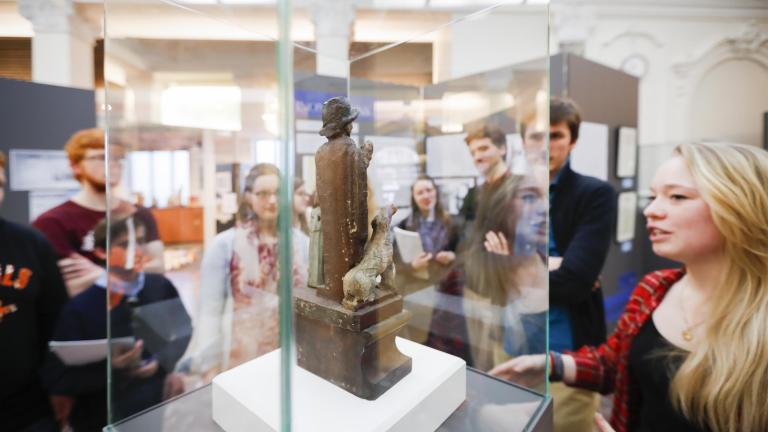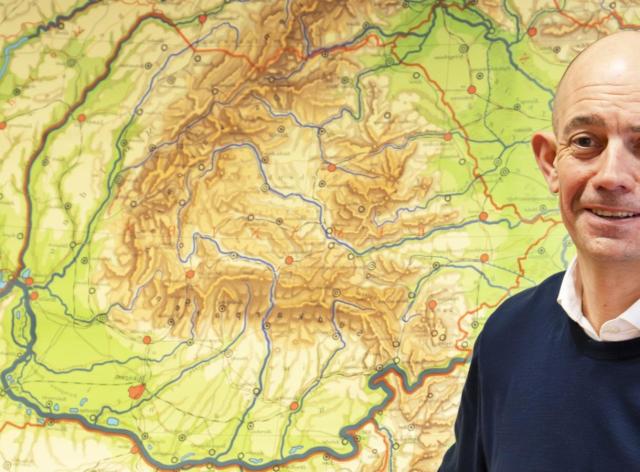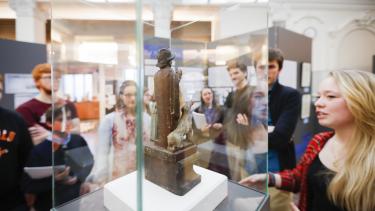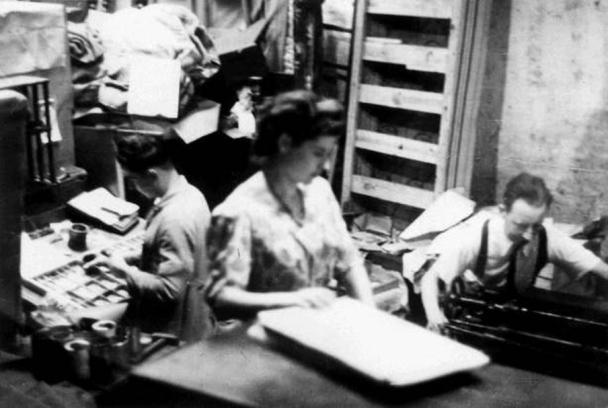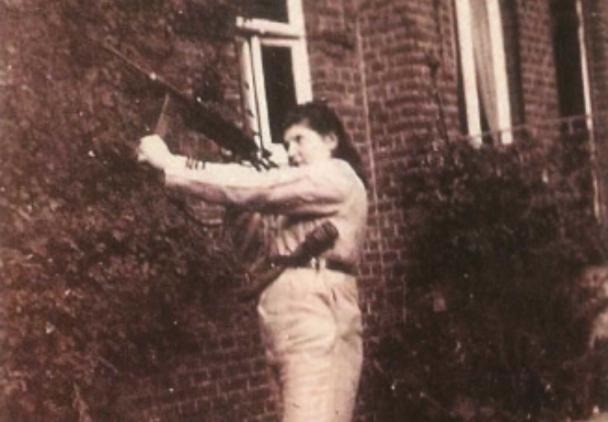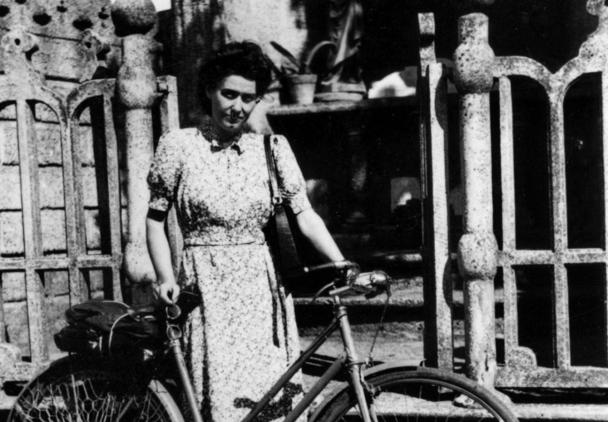As a discipline, history surveys the human past in all its complexity: populations, economies, techniques, politics, religions, arts, ideologies, etc.
At the cost of oral interviews, research in archives or manuscript cabinets, in libraries or museums, on archaeological sites or in certain privileged places where nature has fixed memories of the past, history aims to locate traces left by humans. The aim is to understand the environment in which they lived. It tracks down all possible witnesses.
History borrows questions and methods from the human sciences, making it possible to grasp correlations, detect genesis - in a word, to understand the human adventure.
Two features of history are worth highlighting. Firstly, history is a matter of investigation; indeed, it must begin by discovering the multiform material on which it will work, the "documents" of the past. Secondly, it concerns knowledge of the past over time, sometimes over a very long period, and therefore analyzes births, mutations and evolutions.
A alumni association is present within the department.
Find out more about the History Department
Spotlight
News

Forgotten manuscripts tell the story of Christianization in the Middle Ages
Forgotten manuscripts tell the story of Christianization in the Middle Ages
Matthieu Pignot, researcher in the History Department and member of the PraME research center, has just been awarded the title of FNRS Qualified Researcher for his work on the transmission of religious knowledge between Antiquity and the Middle Ages. The originality of his research lies in the study of writings little or unknown to historians in the context of the Christianization of Europe.

To understand how the transition to Christianity came about, researchers generally turn to the great authors, and in particular Saint Augustine, the key figure of Christian antiquity whose writings have been preserved the most. Alongside his best-known works (such as The City of God or The Confessions), Saint Augustine is also the author of short treatises on practices such as marriage or baptism. "In my early post-doctoral research, I sought to understand how these short texts by Augustine, and other North African sources, circulated in the West between late antiquity and the early Middle Ages. This was a period of religious mixing when the first Christian communities were setting up systems of initiation and teaching", explains Matthieu Pignot.
Very quickly, the researcher's interest also turned to anonymous or pseudepigraphic texts (erroneously attributed to a known author), which had fallen into oblivion in favor of writings by authors, and which also addressed these questions of religious education. "This is the starting point for my research project. These texts are difficult to study because, circulating under several names, we don't know their true author. We don't know who wrote them, and we know little about their ancient and medieval transmission. It is precisely these grey areas that make them so interesting", continues the historian.
To address this question, Matthieu Pignot starts from two bodies of texts: on the one hand, a collection of 80 sermons wrongly attributed to Fulgence of Ruspe and, on the other, a Latin translation of an anonymous collection of Greek philosophical maxims by Rufinus of Aquileia (IV-Vth century), an author who played an important role in the transmission of Greek thought in late antiquity in the West.

These are humble, short and accessible texts that aim to convey a simple, rudimentary education. In this period of great change and the spread of Christianity as the dominant religion, these writings offer valuable clues to the evolution of religious education.
Bringing these writings to life with digital tools
The methodology favored by Matthieu Pignot for this research involves the use of digital publishing. The aim? "To bring into existence and enhance the value of these texts, which don't have the privilege of having an author's name, and some of which haven't even been printed. What's more, stylistic and linguistic analysis tools will perhaps make it possible to provide clues about the author, or at least to group texts together, based on recurring writing tics."
With this project, Matthieu Pignot also aims to develop the automated manuscript transcription component, which is still under development. "My aim is to contribute to the improvement of these tools through my own transcriptions and to participate in the dynamic of interest in medieval manuscripts in archives and libraries", concludes the researcher.
Express CV
Matthieu Pignot has an international background. Educated at UCLouvain, he specialized in the history of Antiquity and the Middle Ages. He continued his studies at the École Pratique des Hautes Études in Paris, then at Oxford University, where he defended his doctoral thesis. After his thesis, he participated in an ERC project on the cult of saints in the Western Christian world (Oxford University - Warsaw University).

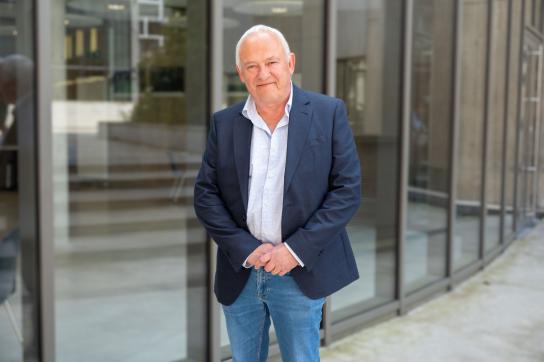
35 years between two accelerators - Serge Mathot's journey, or the art of welding history to physics
35 years between two accelerators - Serge Mathot's journey, or the art of welding history to physics
One foot in the past, the other in the future. From Etruscan granulation to PIXE analysis, Serge Mathot has built a unique career, between scientific heritage and particle accelerators. Portrait of a passionate alumnus at the crossroads of disciplines.
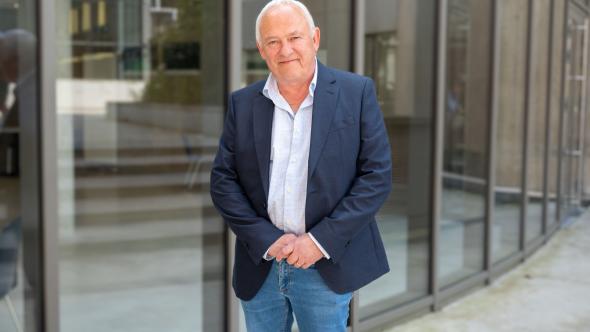
What prompted you to undertake your studies and then your doctorate in physics?
I was fascinated by the research field of one of my professors, Guy Demortier. He was working on the characterization of antique jewelry. He had found a way to differentiate by PIXE (Proton Induced X-ray Emission) analysis between antique and modern brazes that contained Cadmium, the presence of this element in antique jewelry being controversial at the time. He was interested in ancient soldering methods in general, and the granulation technique in particular. He studied them at the Laboratoire d'Analyses par Réaction Nucléaires (LARN). Brazing is an assembly operation involving the fusion of a filler metal (e.g. copper- or silver-based) without melting the base metal. This phenomenon allows a liquid metal to penetrate first by capillary action and then by diffusion at the interface of the metals to be joined, making the junction permanent after solidification. Among the jewels of antiquity, we find brazes made with incredible precision, the ancient techniques are fascinating.
Studying antique jewelry? Not what you'd expect in physics.
In fact, this was one of Namur's fields of research at the time: heritage sciences. Professor Demortier was conducting studies on a variety of jewels, but those made by the Etruscans using the so-called granulation technique, which first appeared in Eturia in the 8th century BC, are particularly incredible. It consists of depositing hundreds of tiny gold granules, up to two-tenths of a millimeter in diameter, on the surface to be decorated, and then soldering them onto the jewel without altering its fineness. So I also trained in brazing techniques and physical metallurgy.
The characterization of jewelry using LARN's particle accelerator, which enables non-destructive analysis, yields valuable information for heritage science.
This is, moreover, a current area of collaboration between the Department of Physics and the Department of History at UNamur (NDLR: notably through the ARC Phoenix project).
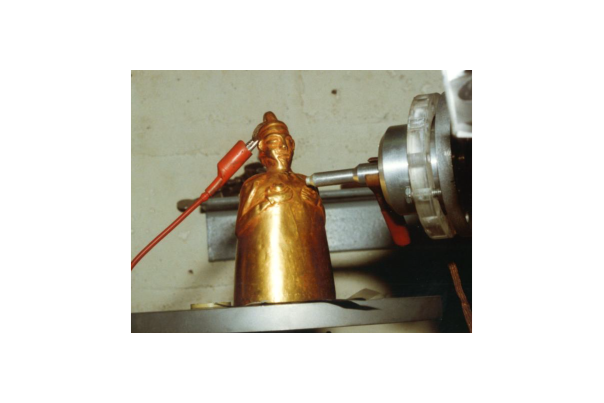
How did that help you land a job at CERN?
I applied for a position as a physicist at CERN in the field of vacuum and thin films, but was invited for the position of head of the vacuum brazing department. This department is very important for CERN as it studies methods for assembling particularly delicate and precise parts for accelerators. It also manufactures prototypes and often one-off parts. Broadly speaking, vacuum brazing is the same technique as the one we study at Namur, except that it is carried out in a vacuum chamber. This means no oxidation, perfect wetting of the brazing alloys on the parts to be assembled, and very precise temperature control to obtain very precise assemblies (we're talking microns!). I'd never heard of vacuum brazing, but my experience of Etruscan brazing, metallurgy and my background in applied physics as taught at Namur were of particular interest to the selection committee. They hired me right away!
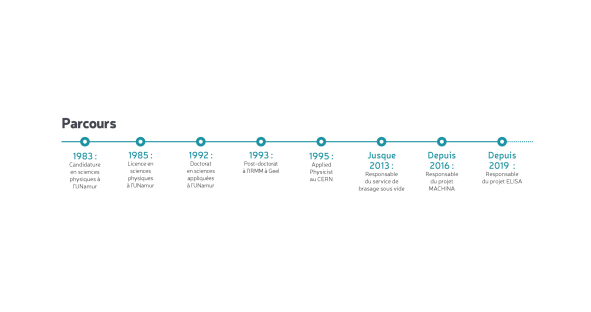
Tell us about CERN and the projects that keep you busy.
CERN is primarily known for hosting particle accelerators, including the famous LHC (Large Hadron Collider), a 27 km circumference accelerator buried some 100 m underground, which accelerates particles to 99.9999991% of the speed of light! CERN's research focuses on technology and innovation in many fields: nuclear physics, cosmic rays and cloud formation, antimatter research, the search for rare phenomena (such as the Higgs boson) and a contribution to neutrino research. It is also the birthplace of the World Wide Web (WWW). There are also projects in healthcare, medicine and partnerships with industry.
Nuclear physics at CERN is very different from what we do at UNamur with the ALTAÏS accelerator. But my training in applied physics (namuroise) has enabled me to integrate seamlessly into various research projects.
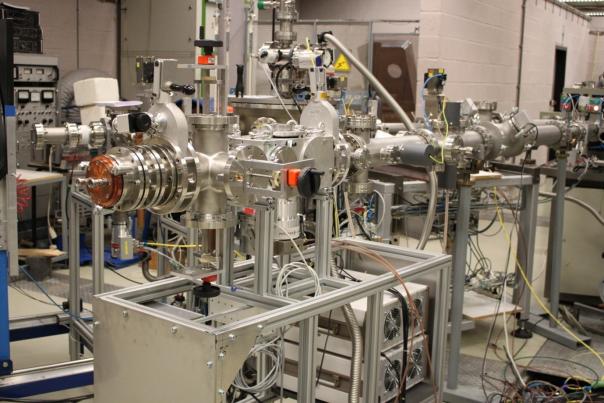
For my part, in addition to developing vacuum brazing methods, a field in which I've worked for over 20 years, I've worked a lot in parallel for the CLOUD experiment. For over 10 years, and until recently, I was its Technical Coordinator. CLOUD is a small but fascinating experiment at CERN which studies cloud formation and uses a particle beam to reproduce atomic bombardment in the laboratory in the manner of galactic radiation in our atmosphere. Using an ultra-clean 26 m³ cloud chamber, precise gas injection systems, electric fields, UV light systems and multiple detectors, we reproduce and study the Earth's atmosphere to understand whether galactic rays can indeed influence climate. This experiment calls on various fields of applied physics, and my background at UNamur has helped me once again.
I was also responsible for CERN's MACHINA project -Movable Accelerator for Cultural Heritage In situ Non-destructive Analysis - carried out in collaboration with the Istituto Nazionale di Fisica Nucleare (INFN), Florence section - Italy. Together, we have created the first portable proton accelerator for in-situ, non-destructive analysis in heritage science. MACHINA is soon to be used at the OPD (Opificio delle Pietre Dure), one of the oldest and most prestigious art restoration centers, also in Florence. The accelerator is also destined to travel to other museums or restoration centers.
Currently, I'm in charge of the ELISA (Experimental LInac for Surface Analysis) project. With ELISA, we're running a real proton accelerator for the first time in a place open to the public: the Science Gateway (SGW), CERN's new permanent exhibition center

ELISA uses the same accelerator cavity as MACHINA. The public can observe a proton beam extracted just a few centimetres from their eyes. Demonstrations are organized to show various physical phenomena, such as light production in gases or beam deflection with dipoles or quadrupoles, for example. The PIXE analysis method is also presented. ELISA is also a high-performance accelerator that we use for research projects in the field of heritage and others such as thin films, which are used extensively at CERN. The special feature is that the scientists who come to work with us do so in front of the public!
Do you have a story to tell?
I remember that in 1989, I finished typing my report for my IRSIA fellowship in the middle of the night, the day before the deadline. It had to be in by midnight the next day. There were very few computers back then, so I typed my report at the last minute on one of the secretaries' Macs. One false move and pow! all my data was gone - big panic! The next day, the secretary helped me restore my file, we printed out the document and I dropped it straight into the mailbox in Brussels, where I arrived after 11pm, in extremis, because at midnight, someone had come to close the mailbox. Fortunately, technology has come a long way since then...

And I can't resist sharing two images 35 years apart!
To the left, a Gold statuette (Egypt), c. 2000 BC, analyzed at LARN - UNamur (photo 1990) and to the right, a copy (in Brass) of the Dame de Brassempouy, analyzed with ELISA - CERN (2025).
The "photographer" is the same, so we've come full circle...
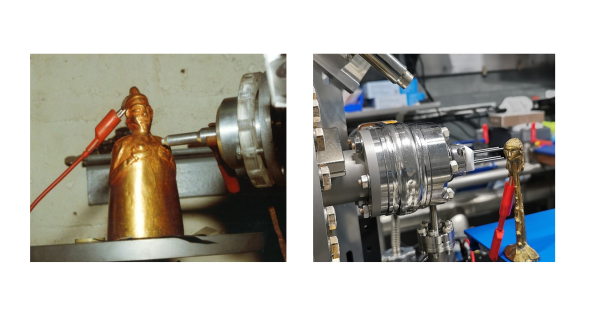
The proximity between teaching and research inspires and questions. This enables graduate students to move into multiple areas of working life.
Come and study in Namur!
Serge Mathot (May 2025) - Interview by Karin Derochette
Further information
- The CERN accelerators complex
- The Science Portal, CERN's public education and communication center
- Newsroom - June 2025 | The Departement of physics hosts a delegation from CERN
- Newsroom and Omalius Alumni article - September 2022 | François Briard
CERN - the science portal
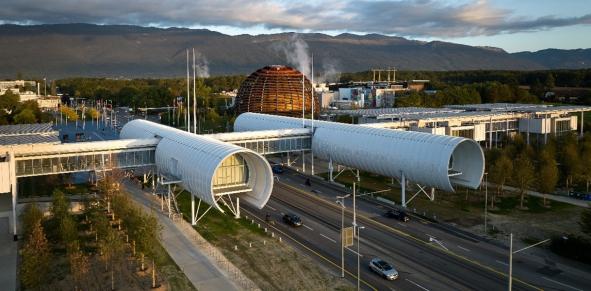
This article is taken from the "Alumni" section of Omalius magazine #38 (September 2025).
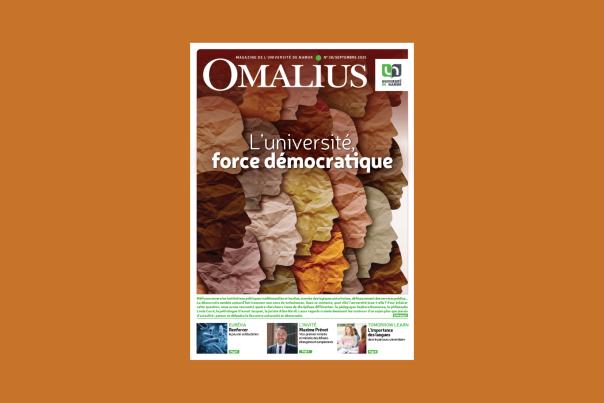
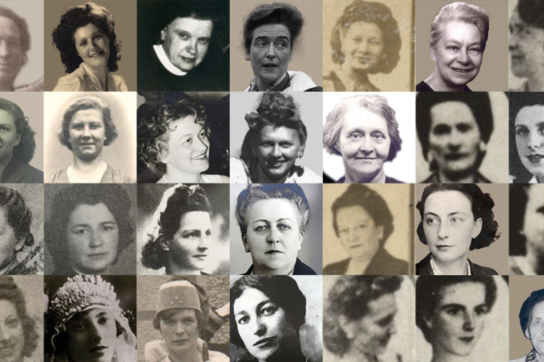
The role of women in the Resistance: a memory to be reclaimed
The role of women in the Resistance: a memory to be reclaimed
On April 8, the Histoire, Sons et Images research center (HiSI, a member of the Institut Patrimoines, Transmissions et Héritages - PaTHs) organized, in collaboration with the "Coalition 8 mai" association, a colloquium on the theme of the relationship between women and the extreme right. Bénédicte Rochet and Axel Tixhon, professors in the History Department, explored this theme from the angle of women active in the Resistance during the 40-45 war. Their approach is fully in line with the research center's vision, which studies audio and/or visual documents as historical sources, but also history as a way of understanding the present.
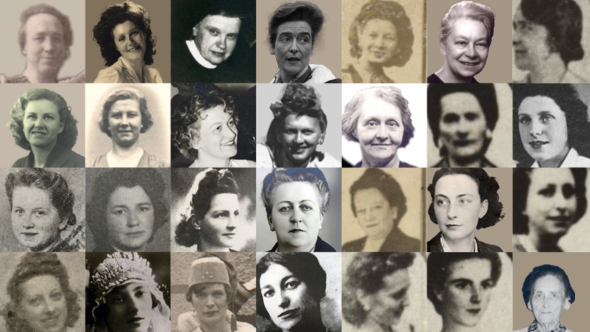
This article is taken from the "Experts" section of the July 2025 issue of Omalius magazine.
How did women integrate resistance movements during the 40-45 war?
Axel Tixhon: Women were found in resistance networks hiding Jewish children, Allied soldiers and airmen, and political opponents. These people were often housed temporarily before being exfiltrated by escape routes from the occupied territories to Spain and then Great Britain. The hiding networks relied on small family units, hermetically sealed from the outside world, but very open on the inside. Naturally, when a family welcomed someone under its roof, all its members, especially the women, took part. Their involvement was therefore an extension of the traditional role they played at the time.
We also observe profiles of emancipated women. For example, Louise-Marie Danhaive, known for her literary activities before the war, became involved in the underground press. She thus broke away from the traditional role of women. There were also lesser-known personalities such as Juliette Bernard. Involved in a folk group in Fosses-la-Ville before the war, she was to enter the Resistance, mainly in the intelligence sector and helping Communist Party supporters.
Although quite rare, some women also took up arms, like Madeleine Tasset (Andenne), a photo of whom has been found showing her handling a machine gun and wearing secret army garb.
Resistance women have often been invisibilized, how do you explain this?
Bénédicte Rochet: First of all, there are factors specific to the history of Belgian resistance and politics. In the aftermath of the 2nd World War, the government had to deal with thousands of resistance fighters, some of whom were armed, while others were part of the Front de l'indépendance, a predominantly Communist network whose size raised fears of revolution in our country. Churchill and Roosevelt urged the Belgian government to take back the reins of power and maintain order, relying on official police forces and the Belgian army. In this context, the resistance was denigrated and, above all, disarmed.
From November 1944 onwards, resistance fighters demonstrated to gain recognition for their status. These demonstrations were to be swept under the carpet by the government and even the press. Even today, commemorations focus mainly on the army. And when we talk about the Resistance, we pay tribute to those who died during the war.
Many women, moreover, won't apply for status recognition because they don't identify with the military connotation associated with it at the time. What's more, since they often joined the resistance with the whole family unit, it was the father of the family who would submit the application for recognition. All this contributed to the invisibilization of resistance fighters.
A.T.: At the symposium, Ellen De Soete, founder of the Coalition 8 mai, gave a very moving testimony. She explained how her mother, an arrested and tortured resistance fighter, built her whole life on silence. Her ordeal was the consequence of the fact that others had spoken out. It was therefore essential for her to keep silent so as not to endanger her children. If they knew, they too might be tortured. It was only at the end of her life that she began to speak out. Ellen De Soete explained that, as children, their mother forbade them to go out or invite friends to the house. The scars caused by the war often went beyond the individuals themselves to have an impact on the whole family, including subsequent generations. It was this culture of silence that contributed to the invisibility of women resistance fighters.
B.R.: Starting in the 60s and 70s, there was a shift with gender studies. Studies would initially focus on women at work and women's rights, but not at all on their role in wartime contexts. It wasn't until the late 90s and early 2000s, therefore, that history turned its attention to women resistance fighters during the 40-45 war.
At the symposium, you also addressed the relationship between today's far right and gender issues. Women's rights are often undermined by far-right parties, yet in France, Italy and Germany, the leading figures of these parties are women. How can we explain this contradiction?
A.T.: It's hard to answer, as it seems so illogical. It seems more like an opportunistic posture than a desire to make the genders equal in society. The presence of women at the head of far-right movements in Europe is a means of deradicalizing the discourse. We also know that, in the political communication of the far right, there's no shortage of paradoxes. In a way, these parties like to play up the gap between what is expected of political figures and what they say or do. So a woman who makes a speech that's borderline masculinist is acceptable in these parties, whereas it wouldn't be in a traditional party.
B.R.: The political scientists who took part in the symposium also provided an element of response that joins and completes the story. In their platforms, these parties claim to defend women's right to a sense of security. They tell them: you're lucky, you're free and you live in a context of freedom of expression, but you lack physical security. And who puts this security at risk? It's these migrants, these foreigners who rape our women and who are designated as the common enemy. This talk of security can affect some women. Those who joined the Nazi party as early as the 30s, did so with the idea of living in a secure society sheltered from the violence of Communists, Jews, etc.
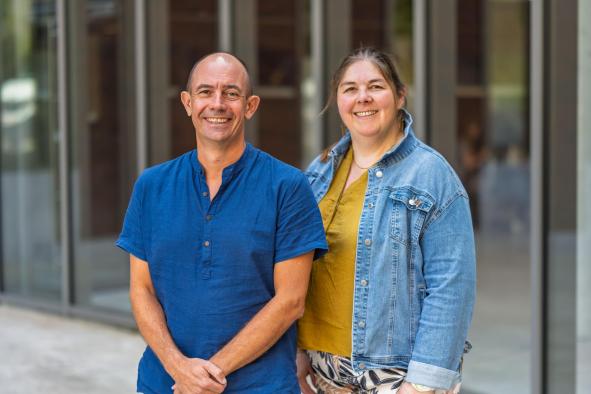
Did Nazism also rely on great female figures?
B.R.:We only began to look at the women of the Third Reich in the 1990s. Women often played a role as wives. Examples include Magda Goebbels, wife of Propaganda Minister Joseph Goebbels, or Emmy Sonnemann, wife of Hermann Göring. These women played a role in networking and supporting the regime, organizing dinners and receptions, for example. Jonathan Glazer's recent film, "The Zone of Interest", illustrates this role of women. It focuses on the family of the Auschwitz camp commandant. It shows how his wife establishes a welcoming family climate and thus plays an important role in supporting her husband, even though she knows what's going on in the camp on the other side of his garden wall.
Aside from wives, over 500,000 women enlisted for the Third Reich, as camp guards, nurses and so on. And then there were a few personalities who didn't act as wives. Leni Riefenstahl, for example, made documentary films that supported the party.
A.T.: And these were probably the most effective films of Nazi propaganda!
The Nazi party's program for women has evolved over the years. In the '30s, it was all about keeping women safe. In the 40s, women's role was to produce babies to support the Aryan race. And then, in 43, as the Nazis realized they were losing the war, the cursor moved again: women were then engaged in the war industry.
Memorial work among the general public often focuses on the consequences of Nazism, less on the mechanisms and rhetoric that enabled the Nazis to come to power. Are the methods and rhetoric of the time similar to those of today's far right?
A.T.: Yes, for example in the search for scapegoats and the development of fears. At the symposium, political scientists spoke of "moral panics". Today, the far right insists, for example, on the decline of moral values, pointing the finger at transgender people or people with different sexual preferences. It will insist on the need to transform the social model to return to a traditional one, all the while instilling fear. The instrumentalization of fears is the foundation of the electoral strategy of far-right parties, either by accentuating fears that exist, or by literally giving them birth.
We know that anti-Semitism existed beforehand, but the Nazis attached to it many violent and dehumanizing discourses, to justify the extermination of the Jews. Violence was, from then on, justified by the fact that Jewish, gypsy and homosexual populations were dangerous.
The same pattern can be found today in some of the aggressive rhetoric coming from far-right or, more generally, extremist groupuscules. These speeches could lead some to justify violence similar to that of the 40-45 war against these so-called threats to society.
B.R.: The rhetoric is also similar. Both in the Nazi party and in today's far-right parties, we're faced with tribunes who, like Hitler or Goebbels, love monologues. They give speeches that assert truths and create moral panic. On the other hand, all these tribunes are in trouble when they have to debate ideas.
It's much the same today. In an adversarial debate, Donald Trump will, for example, go into conflict, as he did with President Zelenski. Göring, Hitler and Goebbels did exactly the same thing. Sound archives of the Reichstag fire trial have been found in which Göring can be heard going completely out of his depth when put in contradiction with one of the defendants or one of the lawyers.
So these similarities should alert us to the dangers of today's extreme right?
A.T.: Yes. This is the aim of "Coalition 8 mai", created by Ellen De Soete, who realized that, during commemorations, we perpetuate the same gestures, but have often lost the meaning of them. Today, however, there is every reason to fear that the horrors of 40-45 could be repeated. The association wants to raise public awareness of this danger. That's why it has asked the History Department to organize this symposium.
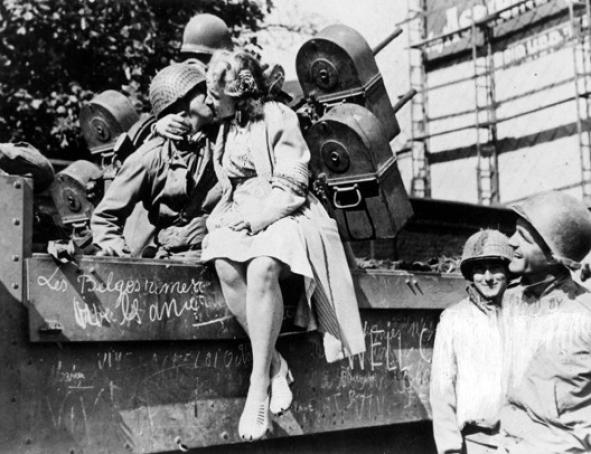
"1000 Résistantes! 1940-1945. Women in the Resistance in the Province of Namur"
Through this publication, readers discover the resistance networks active in the Province of Namur, in which many Namur women were involved during the 40-45 war. The notebook also presents a list of 1,000 Namur resistance fighters and portraits of 15 of them created by Block 2 history students.
The project was initiated by the Service des Musées et du Patrimoine culturel de la Province de Namur (SMPC) headed by Mélodie Brassine, alumnus of the History Department, in collaboration with Professor Axel Tixhon. Initially the idea was to find a resistance fighter for each of the 38 communes that make up the Province, but the SMPC was able, thanks to its research, to draw up a list of 1,000 names. "So there's incredible potential for research into female resistance fighters in the Province of Namur and elsewhere. In the various communes, there's plenty of material to dig through. This could be an opportunity for local authorities to highlight certain profiles through a whole range of approaches. The research work could be carried out by local action groups, secondary schools, or even primary 6 pupils, suggests Axel Tixhon.
This article is taken from the "Experts" section of Omalius magazine #37 (July 2025).
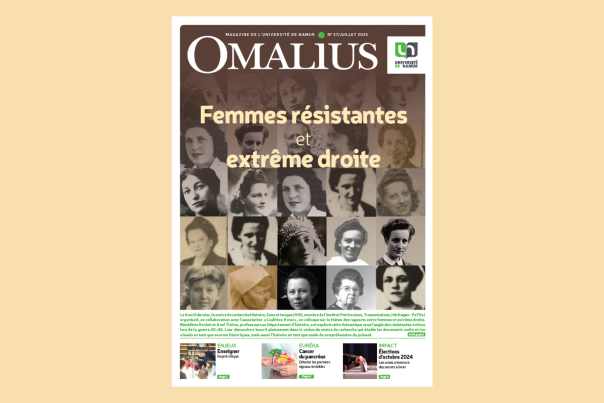
Copyrights (in order of appearance):
- Louise-Marie Danhaive
- Imprimerie clandestine à Liège, 1944 - © Cegesoma
- Madeleine Tasset - copyright: © Collection M. Tasset, Bibliotheca Andana
- Irma Caldow in Solre-sur-Sambre circa 1943-1944 - © Cegesoma
- The kiss on GI September 1944 - © Cegesoma
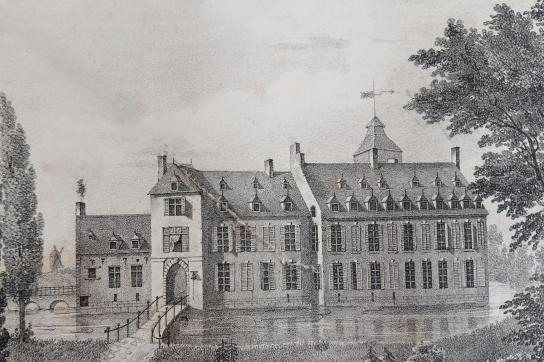
The de Bergeyck collection: rare documents studied by the PraME center
The de Bergeyck collection: rare documents studied by the PraME center
As part of a research project on the medieval heritage preserved at the Moretus Plantin University Library (BUMP), the archive entrusted to it by the de Brouchoven de Bergeyck family has been meticulously studied by historian Romain Waroquier. This collection is of undeniable historical and scientific interest: hitherto unknown to researchers, it contains extremely rare documents.
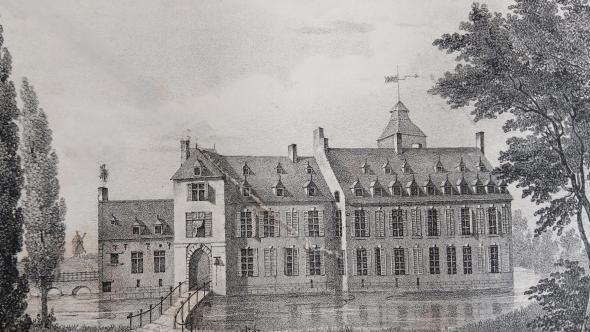
Romain Waroquier holds a PhD in History and is a postdoctoral researcher at the Pratiques médiévales de l'écrit (PraME) research center at UNamur. Since 2024, and thanks to the patronage of the public utility foundation Institut Moretus Plantin, he has inventoried, identified and analyzed each of the 214 documents that make up the archive deposited at the BUMP by Count René de Brouchoven de Bergeyck de Namur d'Elzée, whose ancestors were Counts of Namur (before 1421) and Lords of Dhuy (today's commune of Éghezée).

The collection is exceptional for two reasons: firstly, its chronological depth, which goes right back to the heart of the Middle Ages. The oldest document dates back to 1263, and it is extremely rare for noble archives to have survived through the centuries, and in particular the French Revolution, which resulted in the destruction of many documents recalling our regions' feudal past.Secondly, the collection is remarkable for its coherence: it illustrates, in an unprecedented way, the history of the seigneury of Dhuy, its château (pictured above circa 1828) and its outbuildings. This seigneury has been passed down, without discontinuity, within the same family since the early 15th century
.
A land register unique in the province of Namur
By depositing part of his archives at the BUMP, the Count of Brouchoven de Bergeyck has made an important gesture to the scientific world, which will now be able to exploit them and shed light on certain aspects of the seigniorial history of the Namur region in the Middle Ages.
."The 1263 charter(see image opposite), which relates the donation of the haughty seigneury(the lord's right over persons and property under his jurisdiction, NDLR)by the Count of Namur to Libert de Dhuy, had only been transmitted through copies. We now have access to the original within the Bergeyck fonds," enthuses Romain Waroquier.
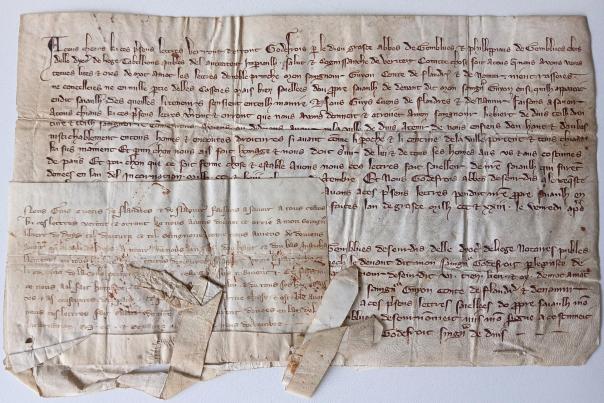
"Alongside some twenty charters documenting the intra-family transmission of the seigneury (1263-1490), the centerpiece of the collection lies in a book or polyptique foncier, a management document in which descriptions of the lands making up the Dhuy seigneury are recorded. This manuscript was written in two phases, the first in 1417 and the second probably around 1489," continues the medievalist. "This type of document is usually found in the case of large ecclesiastical estates". In the context of a secular seigneury, this polyptych has only one comparable equivalent in the Mosan area, the censier of the seigneury of Jauche, dated 1444 and studied by historian Georges Despy. It is therefore a unique document in the province of Namur, but also extremely rare on a wider scale.
A seigneury with a special status
"The document's raison d'être raises questions: it's not a censier, because the description of the seigneury is not based on cens (fee paid to the seigneur by the tenants of a piece of land, Editor's note). So it's not a question of taxation. And the historian goes on to give his hypothesis as to the origin of the manuscript: "the possessions making up the seigneury of Dhuy were brought together at the end of the 14th century by Jean de Namur, the youngest son of Count of Namur Guillaume Ier. The seigneury of Dhuy was his personal possession, over which he bought back all rights and possessions between 1390 and 1392, when he was lord of Wienendaele and Renaix, and not destined to rule. When he became lord of the county in 1418, after the death of his brother William II, without an heir, he probably had the assets of his personal seigneury inventoried to avoid it being confused with that of the county estate". In fact, we note that when the County of Namur was ceded to Philippe le Bon, Duke of Burgundy, in 1421, the seigneury of Dhuy was excluded from the sale. "This is clearly stipulated in the deed of sale of the county. The seigneury is ceded by Jean de Namur as an apanage (portion of domain granted by the lord, as compensation, to a child excluded from the succession of the title, Editor's note), to his natural son Philippe. It is excluded from the sale because it was Jean's possession before he became Count," concludes Romain Waroquier.
An inventory and publications to promote the Bergeyck Fund
The scientific inventory produced by the researcher will shortly be published by Presses Universitaires de Namur. It will provide a detailed overview not only of the medieval part of the collection, but also of its modern and contemporary portions, which consist mainly of wills and marriage agreements (16th-17th centuries), personal documents and a fine epistolary file dating from the Napoleonic period: "This consists of some twenty letters exchanged between the Count and his son, who joined the Empire's army and died during the Spanish War of Independence (a conflict that pitted Spain and its allies against Napoleon I's France between 1808 and 1814, Editor's note)". Several scientific articles will follow, including a critical edition and contextualization of the famous livre foncier mentioned above. The medieval charters will also shortly be digitized and made accessible to the public on the Neptun portal of the Namur university library.
The Pratiques médiévales de l'écrit (PraME) research center
Founded in 2009, the PraME center brings together some twenty researchers who devote their work to writing and the many facets of writing activity in the medieval West. It enjoys recognition in Belgium and internationally, and has forged numerous interdisciplinary collaborations within and outside the academic world (archives, libraries, museums, learned societies, etc.), within the framework of research and scientific mediation projects. The PraME center is a hub of UNamur's PaTHs research institute.
This research project is supported by the Fondation d'utilité publique Institut Moretus Plantin.
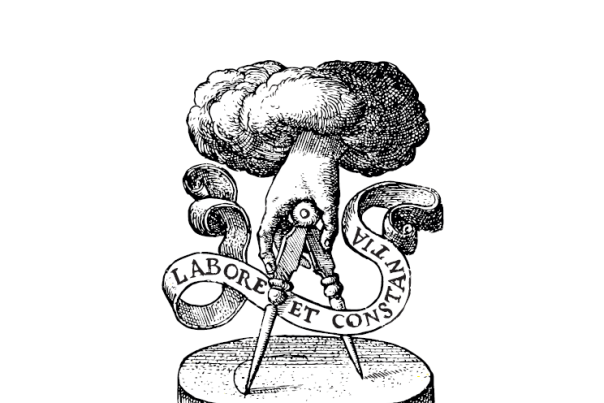
This article was published in the Fond Namur Université newsletter.

Forgotten manuscripts tell the story of Christianization in the Middle Ages
Forgotten manuscripts tell the story of Christianization in the Middle Ages
Matthieu Pignot, researcher in the History Department and member of the PraME research center, has just been awarded the title of FNRS Qualified Researcher for his work on the transmission of religious knowledge between Antiquity and the Middle Ages. The originality of his research lies in the study of writings little or unknown to historians in the context of the Christianization of Europe.

To understand how the transition to Christianity came about, researchers generally turn to the great authors, and in particular Saint Augustine, the key figure of Christian antiquity whose writings have been preserved the most. Alongside his best-known works (such as The City of God or The Confessions), Saint Augustine is also the author of short treatises on practices such as marriage or baptism. "In my early post-doctoral research, I sought to understand how these short texts by Augustine, and other North African sources, circulated in the West between late antiquity and the early Middle Ages. This was a period of religious mixing when the first Christian communities were setting up systems of initiation and teaching", explains Matthieu Pignot.
Very quickly, the researcher's interest also turned to anonymous or pseudepigraphic texts (erroneously attributed to a known author), which had fallen into oblivion in favor of writings by authors, and which also addressed these questions of religious education. "This is the starting point for my research project. These texts are difficult to study because, circulating under several names, we don't know their true author. We don't know who wrote them, and we know little about their ancient and medieval transmission. It is precisely these grey areas that make them so interesting", continues the historian.
To address this question, Matthieu Pignot starts from two bodies of texts: on the one hand, a collection of 80 sermons wrongly attributed to Fulgence of Ruspe and, on the other, a Latin translation of an anonymous collection of Greek philosophical maxims by Rufinus of Aquileia (IV-Vth century), an author who played an important role in the transmission of Greek thought in late antiquity in the West.

These are humble, short and accessible texts that aim to convey a simple, rudimentary education. In this period of great change and the spread of Christianity as the dominant religion, these writings offer valuable clues to the evolution of religious education.
Bringing these writings to life with digital tools
The methodology favored by Matthieu Pignot for this research involves the use of digital publishing. The aim? "To bring into existence and enhance the value of these texts, which don't have the privilege of having an author's name, and some of which haven't even been printed. What's more, stylistic and linguistic analysis tools will perhaps make it possible to provide clues about the author, or at least to group texts together, based on recurring writing tics."
With this project, Matthieu Pignot also aims to develop the automated manuscript transcription component, which is still under development. "My aim is to contribute to the improvement of these tools through my own transcriptions and to participate in the dynamic of interest in medieval manuscripts in archives and libraries", concludes the researcher.
Express CV
Matthieu Pignot has an international background. Educated at UCLouvain, he specialized in the history of Antiquity and the Middle Ages. He continued his studies at the École Pratique des Hautes Études in Paris, then at Oxford University, where he defended his doctoral thesis. After his thesis, he participated in an ERC project on the cult of saints in the Western Christian world (Oxford University - Warsaw University).


35 years between two accelerators - Serge Mathot's journey, or the art of welding history to physics
35 years between two accelerators - Serge Mathot's journey, or the art of welding history to physics
One foot in the past, the other in the future. From Etruscan granulation to PIXE analysis, Serge Mathot has built a unique career, between scientific heritage and particle accelerators. Portrait of a passionate alumnus at the crossroads of disciplines.

What prompted you to undertake your studies and then your doctorate in physics?
I was fascinated by the research field of one of my professors, Guy Demortier. He was working on the characterization of antique jewelry. He had found a way to differentiate by PIXE (Proton Induced X-ray Emission) analysis between antique and modern brazes that contained Cadmium, the presence of this element in antique jewelry being controversial at the time. He was interested in ancient soldering methods in general, and the granulation technique in particular. He studied them at the Laboratoire d'Analyses par Réaction Nucléaires (LARN). Brazing is an assembly operation involving the fusion of a filler metal (e.g. copper- or silver-based) without melting the base metal. This phenomenon allows a liquid metal to penetrate first by capillary action and then by diffusion at the interface of the metals to be joined, making the junction permanent after solidification. Among the jewels of antiquity, we find brazes made with incredible precision, the ancient techniques are fascinating.
Studying antique jewelry? Not what you'd expect in physics.
In fact, this was one of Namur's fields of research at the time: heritage sciences. Professor Demortier was conducting studies on a variety of jewels, but those made by the Etruscans using the so-called granulation technique, which first appeared in Eturia in the 8th century BC, are particularly incredible. It consists of depositing hundreds of tiny gold granules, up to two-tenths of a millimeter in diameter, on the surface to be decorated, and then soldering them onto the jewel without altering its fineness. So I also trained in brazing techniques and physical metallurgy.
The characterization of jewelry using LARN's particle accelerator, which enables non-destructive analysis, yields valuable information for heritage science.
This is, moreover, a current area of collaboration between the Department of Physics and the Department of History at UNamur (NDLR: notably through the ARC Phoenix project).

How did that help you land a job at CERN?
I applied for a position as a physicist at CERN in the field of vacuum and thin films, but was invited for the position of head of the vacuum brazing department. This department is very important for CERN as it studies methods for assembling particularly delicate and precise parts for accelerators. It also manufactures prototypes and often one-off parts. Broadly speaking, vacuum brazing is the same technique as the one we study at Namur, except that it is carried out in a vacuum chamber. This means no oxidation, perfect wetting of the brazing alloys on the parts to be assembled, and very precise temperature control to obtain very precise assemblies (we're talking microns!). I'd never heard of vacuum brazing, but my experience of Etruscan brazing, metallurgy and my background in applied physics as taught at Namur were of particular interest to the selection committee. They hired me right away!

Tell us about CERN and the projects that keep you busy.
CERN is primarily known for hosting particle accelerators, including the famous LHC (Large Hadron Collider), a 27 km circumference accelerator buried some 100 m underground, which accelerates particles to 99.9999991% of the speed of light! CERN's research focuses on technology and innovation in many fields: nuclear physics, cosmic rays and cloud formation, antimatter research, the search for rare phenomena (such as the Higgs boson) and a contribution to neutrino research. It is also the birthplace of the World Wide Web (WWW). There are also projects in healthcare, medicine and partnerships with industry.
Nuclear physics at CERN is very different from what we do at UNamur with the ALTAÏS accelerator. But my training in applied physics (namuroise) has enabled me to integrate seamlessly into various research projects.

For my part, in addition to developing vacuum brazing methods, a field in which I've worked for over 20 years, I've worked a lot in parallel for the CLOUD experiment. For over 10 years, and until recently, I was its Technical Coordinator. CLOUD is a small but fascinating experiment at CERN which studies cloud formation and uses a particle beam to reproduce atomic bombardment in the laboratory in the manner of galactic radiation in our atmosphere. Using an ultra-clean 26 m³ cloud chamber, precise gas injection systems, electric fields, UV light systems and multiple detectors, we reproduce and study the Earth's atmosphere to understand whether galactic rays can indeed influence climate. This experiment calls on various fields of applied physics, and my background at UNamur has helped me once again.
I was also responsible for CERN's MACHINA project -Movable Accelerator for Cultural Heritage In situ Non-destructive Analysis - carried out in collaboration with the Istituto Nazionale di Fisica Nucleare (INFN), Florence section - Italy. Together, we have created the first portable proton accelerator for in-situ, non-destructive analysis in heritage science. MACHINA is soon to be used at the OPD (Opificio delle Pietre Dure), one of the oldest and most prestigious art restoration centers, also in Florence. The accelerator is also destined to travel to other museums or restoration centers.
Currently, I'm in charge of the ELISA (Experimental LInac for Surface Analysis) project. With ELISA, we're running a real proton accelerator for the first time in a place open to the public: the Science Gateway (SGW), CERN's new permanent exhibition center

ELISA uses the same accelerator cavity as MACHINA. The public can observe a proton beam extracted just a few centimetres from their eyes. Demonstrations are organized to show various physical phenomena, such as light production in gases or beam deflection with dipoles or quadrupoles, for example. The PIXE analysis method is also presented. ELISA is also a high-performance accelerator that we use for research projects in the field of heritage and others such as thin films, which are used extensively at CERN. The special feature is that the scientists who come to work with us do so in front of the public!
Do you have a story to tell?
I remember that in 1989, I finished typing my report for my IRSIA fellowship in the middle of the night, the day before the deadline. It had to be in by midnight the next day. There were very few computers back then, so I typed my report at the last minute on one of the secretaries' Macs. One false move and pow! all my data was gone - big panic! The next day, the secretary helped me restore my file, we printed out the document and I dropped it straight into the mailbox in Brussels, where I arrived after 11pm, in extremis, because at midnight, someone had come to close the mailbox. Fortunately, technology has come a long way since then...

And I can't resist sharing two images 35 years apart!
To the left, a Gold statuette (Egypt), c. 2000 BC, analyzed at LARN - UNamur (photo 1990) and to the right, a copy (in Brass) of the Dame de Brassempouy, analyzed with ELISA - CERN (2025).
The "photographer" is the same, so we've come full circle...

The proximity between teaching and research inspires and questions. This enables graduate students to move into multiple areas of working life.
Come and study in Namur!
Serge Mathot (May 2025) - Interview by Karin Derochette
Further information
- The CERN accelerators complex
- The Science Portal, CERN's public education and communication center
- Newsroom - June 2025 | The Departement of physics hosts a delegation from CERN
- Newsroom and Omalius Alumni article - September 2022 | François Briard
CERN - the science portal

This article is taken from the "Alumni" section of Omalius magazine #38 (September 2025).


The role of women in the Resistance: a memory to be reclaimed
The role of women in the Resistance: a memory to be reclaimed
On April 8, the Histoire, Sons et Images research center (HiSI, a member of the Institut Patrimoines, Transmissions et Héritages - PaTHs) organized, in collaboration with the "Coalition 8 mai" association, a colloquium on the theme of the relationship between women and the extreme right. Bénédicte Rochet and Axel Tixhon, professors in the History Department, explored this theme from the angle of women active in the Resistance during the 40-45 war. Their approach is fully in line with the research center's vision, which studies audio and/or visual documents as historical sources, but also history as a way of understanding the present.

This article is taken from the "Experts" section of the July 2025 issue of Omalius magazine.
How did women integrate resistance movements during the 40-45 war?
Axel Tixhon: Women were found in resistance networks hiding Jewish children, Allied soldiers and airmen, and political opponents. These people were often housed temporarily before being exfiltrated by escape routes from the occupied territories to Spain and then Great Britain. The hiding networks relied on small family units, hermetically sealed from the outside world, but very open on the inside. Naturally, when a family welcomed someone under its roof, all its members, especially the women, took part. Their involvement was therefore an extension of the traditional role they played at the time.
We also observe profiles of emancipated women. For example, Louise-Marie Danhaive, known for her literary activities before the war, became involved in the underground press. She thus broke away from the traditional role of women. There were also lesser-known personalities such as Juliette Bernard. Involved in a folk group in Fosses-la-Ville before the war, she was to enter the Resistance, mainly in the intelligence sector and helping Communist Party supporters.
Although quite rare, some women also took up arms, like Madeleine Tasset (Andenne), a photo of whom has been found showing her handling a machine gun and wearing secret army garb.
Resistance women have often been invisibilized, how do you explain this?
Bénédicte Rochet: First of all, there are factors specific to the history of Belgian resistance and politics. In the aftermath of the 2nd World War, the government had to deal with thousands of resistance fighters, some of whom were armed, while others were part of the Front de l'indépendance, a predominantly Communist network whose size raised fears of revolution in our country. Churchill and Roosevelt urged the Belgian government to take back the reins of power and maintain order, relying on official police forces and the Belgian army. In this context, the resistance was denigrated and, above all, disarmed.
From November 1944 onwards, resistance fighters demonstrated to gain recognition for their status. These demonstrations were to be swept under the carpet by the government and even the press. Even today, commemorations focus mainly on the army. And when we talk about the Resistance, we pay tribute to those who died during the war.
Many women, moreover, won't apply for status recognition because they don't identify with the military connotation associated with it at the time. What's more, since they often joined the resistance with the whole family unit, it was the father of the family who would submit the application for recognition. All this contributed to the invisibilization of resistance fighters.
A.T.: At the symposium, Ellen De Soete, founder of the Coalition 8 mai, gave a very moving testimony. She explained how her mother, an arrested and tortured resistance fighter, built her whole life on silence. Her ordeal was the consequence of the fact that others had spoken out. It was therefore essential for her to keep silent so as not to endanger her children. If they knew, they too might be tortured. It was only at the end of her life that she began to speak out. Ellen De Soete explained that, as children, their mother forbade them to go out or invite friends to the house. The scars caused by the war often went beyond the individuals themselves to have an impact on the whole family, including subsequent generations. It was this culture of silence that contributed to the invisibility of women resistance fighters.
B.R.: Starting in the 60s and 70s, there was a shift with gender studies. Studies would initially focus on women at work and women's rights, but not at all on their role in wartime contexts. It wasn't until the late 90s and early 2000s, therefore, that history turned its attention to women resistance fighters during the 40-45 war.
At the symposium, you also addressed the relationship between today's far right and gender issues. Women's rights are often undermined by far-right parties, yet in France, Italy and Germany, the leading figures of these parties are women. How can we explain this contradiction?
A.T.: It's hard to answer, as it seems so illogical. It seems more like an opportunistic posture than a desire to make the genders equal in society. The presence of women at the head of far-right movements in Europe is a means of deradicalizing the discourse. We also know that, in the political communication of the far right, there's no shortage of paradoxes. In a way, these parties like to play up the gap between what is expected of political figures and what they say or do. So a woman who makes a speech that's borderline masculinist is acceptable in these parties, whereas it wouldn't be in a traditional party.
B.R.: The political scientists who took part in the symposium also provided an element of response that joins and completes the story. In their platforms, these parties claim to defend women's right to a sense of security. They tell them: you're lucky, you're free and you live in a context of freedom of expression, but you lack physical security. And who puts this security at risk? It's these migrants, these foreigners who rape our women and who are designated as the common enemy. This talk of security can affect some women. Those who joined the Nazi party as early as the 30s, did so with the idea of living in a secure society sheltered from the violence of Communists, Jews, etc.

Did Nazism also rely on great female figures?
B.R.:We only began to look at the women of the Third Reich in the 1990s. Women often played a role as wives. Examples include Magda Goebbels, wife of Propaganda Minister Joseph Goebbels, or Emmy Sonnemann, wife of Hermann Göring. These women played a role in networking and supporting the regime, organizing dinners and receptions, for example. Jonathan Glazer's recent film, "The Zone of Interest", illustrates this role of women. It focuses on the family of the Auschwitz camp commandant. It shows how his wife establishes a welcoming family climate and thus plays an important role in supporting her husband, even though she knows what's going on in the camp on the other side of his garden wall.
Aside from wives, over 500,000 women enlisted for the Third Reich, as camp guards, nurses and so on. And then there were a few personalities who didn't act as wives. Leni Riefenstahl, for example, made documentary films that supported the party.
A.T.: And these were probably the most effective films of Nazi propaganda!
The Nazi party's program for women has evolved over the years. In the '30s, it was all about keeping women safe. In the 40s, women's role was to produce babies to support the Aryan race. And then, in 43, as the Nazis realized they were losing the war, the cursor moved again: women were then engaged in the war industry.
Memorial work among the general public often focuses on the consequences of Nazism, less on the mechanisms and rhetoric that enabled the Nazis to come to power. Are the methods and rhetoric of the time similar to those of today's far right?
A.T.: Yes, for example in the search for scapegoats and the development of fears. At the symposium, political scientists spoke of "moral panics". Today, the far right insists, for example, on the decline of moral values, pointing the finger at transgender people or people with different sexual preferences. It will insist on the need to transform the social model to return to a traditional one, all the while instilling fear. The instrumentalization of fears is the foundation of the electoral strategy of far-right parties, either by accentuating fears that exist, or by literally giving them birth.
We know that anti-Semitism existed beforehand, but the Nazis attached to it many violent and dehumanizing discourses, to justify the extermination of the Jews. Violence was, from then on, justified by the fact that Jewish, gypsy and homosexual populations were dangerous.
The same pattern can be found today in some of the aggressive rhetoric coming from far-right or, more generally, extremist groupuscules. These speeches could lead some to justify violence similar to that of the 40-45 war against these so-called threats to society.
B.R.: The rhetoric is also similar. Both in the Nazi party and in today's far-right parties, we're faced with tribunes who, like Hitler or Goebbels, love monologues. They give speeches that assert truths and create moral panic. On the other hand, all these tribunes are in trouble when they have to debate ideas.
It's much the same today. In an adversarial debate, Donald Trump will, for example, go into conflict, as he did with President Zelenski. Göring, Hitler and Goebbels did exactly the same thing. Sound archives of the Reichstag fire trial have been found in which Göring can be heard going completely out of his depth when put in contradiction with one of the defendants or one of the lawyers.
So these similarities should alert us to the dangers of today's extreme right?
A.T.: Yes. This is the aim of "Coalition 8 mai", created by Ellen De Soete, who realized that, during commemorations, we perpetuate the same gestures, but have often lost the meaning of them. Today, however, there is every reason to fear that the horrors of 40-45 could be repeated. The association wants to raise public awareness of this danger. That's why it has asked the History Department to organize this symposium.

"1000 Résistantes! 1940-1945. Women in the Resistance in the Province of Namur"
Through this publication, readers discover the resistance networks active in the Province of Namur, in which many Namur women were involved during the 40-45 war. The notebook also presents a list of 1,000 Namur resistance fighters and portraits of 15 of them created by Block 2 history students.
The project was initiated by the Service des Musées et du Patrimoine culturel de la Province de Namur (SMPC) headed by Mélodie Brassine, alumnus of the History Department, in collaboration with Professor Axel Tixhon. Initially the idea was to find a resistance fighter for each of the 38 communes that make up the Province, but the SMPC was able, thanks to its research, to draw up a list of 1,000 names. "So there's incredible potential for research into female resistance fighters in the Province of Namur and elsewhere. In the various communes, there's plenty of material to dig through. This could be an opportunity for local authorities to highlight certain profiles through a whole range of approaches. The research work could be carried out by local action groups, secondary schools, or even primary 6 pupils, suggests Axel Tixhon.
This article is taken from the "Experts" section of Omalius magazine #37 (July 2025).

Copyrights (in order of appearance):
- Louise-Marie Danhaive
- Imprimerie clandestine à Liège, 1944 - © Cegesoma
- Madeleine Tasset - copyright: © Collection M. Tasset, Bibliotheca Andana
- Irma Caldow in Solre-sur-Sambre circa 1943-1944 - © Cegesoma
- The kiss on GI September 1944 - © Cegesoma

The de Bergeyck collection: rare documents studied by the PraME center
The de Bergeyck collection: rare documents studied by the PraME center
As part of a research project on the medieval heritage preserved at the Moretus Plantin University Library (BUMP), the archive entrusted to it by the de Brouchoven de Bergeyck family has been meticulously studied by historian Romain Waroquier. This collection is of undeniable historical and scientific interest: hitherto unknown to researchers, it contains extremely rare documents.

Romain Waroquier holds a PhD in History and is a postdoctoral researcher at the Pratiques médiévales de l'écrit (PraME) research center at UNamur. Since 2024, and thanks to the patronage of the public utility foundation Institut Moretus Plantin, he has inventoried, identified and analyzed each of the 214 documents that make up the archive deposited at the BUMP by Count René de Brouchoven de Bergeyck de Namur d'Elzée, whose ancestors were Counts of Namur (before 1421) and Lords of Dhuy (today's commune of Éghezée).

The collection is exceptional for two reasons: firstly, its chronological depth, which goes right back to the heart of the Middle Ages. The oldest document dates back to 1263, and it is extremely rare for noble archives to have survived through the centuries, and in particular the French Revolution, which resulted in the destruction of many documents recalling our regions' feudal past.Secondly, the collection is remarkable for its coherence: it illustrates, in an unprecedented way, the history of the seigneury of Dhuy, its château (pictured above circa 1828) and its outbuildings. This seigneury has been passed down, without discontinuity, within the same family since the early 15th century
.
A land register unique in the province of Namur
By depositing part of his archives at the BUMP, the Count of Brouchoven de Bergeyck has made an important gesture to the scientific world, which will now be able to exploit them and shed light on certain aspects of the seigniorial history of the Namur region in the Middle Ages.
."The 1263 charter(see image opposite), which relates the donation of the haughty seigneury(the lord's right over persons and property under his jurisdiction, NDLR)by the Count of Namur to Libert de Dhuy, had only been transmitted through copies. We now have access to the original within the Bergeyck fonds," enthuses Romain Waroquier.

"Alongside some twenty charters documenting the intra-family transmission of the seigneury (1263-1490), the centerpiece of the collection lies in a book or polyptique foncier, a management document in which descriptions of the lands making up the Dhuy seigneury are recorded. This manuscript was written in two phases, the first in 1417 and the second probably around 1489," continues the medievalist. "This type of document is usually found in the case of large ecclesiastical estates". In the context of a secular seigneury, this polyptych has only one comparable equivalent in the Mosan area, the censier of the seigneury of Jauche, dated 1444 and studied by historian Georges Despy. It is therefore a unique document in the province of Namur, but also extremely rare on a wider scale.
A seigneury with a special status
"The document's raison d'être raises questions: it's not a censier, because the description of the seigneury is not based on cens (fee paid to the seigneur by the tenants of a piece of land, Editor's note). So it's not a question of taxation. And the historian goes on to give his hypothesis as to the origin of the manuscript: "the possessions making up the seigneury of Dhuy were brought together at the end of the 14th century by Jean de Namur, the youngest son of Count of Namur Guillaume Ier. The seigneury of Dhuy was his personal possession, over which he bought back all rights and possessions between 1390 and 1392, when he was lord of Wienendaele and Renaix, and not destined to rule. When he became lord of the county in 1418, after the death of his brother William II, without an heir, he probably had the assets of his personal seigneury inventoried to avoid it being confused with that of the county estate". In fact, we note that when the County of Namur was ceded to Philippe le Bon, Duke of Burgundy, in 1421, the seigneury of Dhuy was excluded from the sale. "This is clearly stipulated in the deed of sale of the county. The seigneury is ceded by Jean de Namur as an apanage (portion of domain granted by the lord, as compensation, to a child excluded from the succession of the title, Editor's note), to his natural son Philippe. It is excluded from the sale because it was Jean's possession before he became Count," concludes Romain Waroquier.
An inventory and publications to promote the Bergeyck Fund
The scientific inventory produced by the researcher will shortly be published by Presses Universitaires de Namur. It will provide a detailed overview not only of the medieval part of the collection, but also of its modern and contemporary portions, which consist mainly of wills and marriage agreements (16th-17th centuries), personal documents and a fine epistolary file dating from the Napoleonic period: "This consists of some twenty letters exchanged between the Count and his son, who joined the Empire's army and died during the Spanish War of Independence (a conflict that pitted Spain and its allies against Napoleon I's France between 1808 and 1814, Editor's note)". Several scientific articles will follow, including a critical edition and contextualization of the famous livre foncier mentioned above. The medieval charters will also shortly be digitized and made accessible to the public on the Neptun portal of the Namur university library.
The Pratiques médiévales de l'écrit (PraME) research center
Founded in 2009, the PraME center brings together some twenty researchers who devote their work to writing and the many facets of writing activity in the medieval West. It enjoys recognition in Belgium and internationally, and has forged numerous interdisciplinary collaborations within and outside the academic world (archives, libraries, museums, learned societies, etc.), within the framework of research and scientific mediation projects. The PraME center is a hub of UNamur's PaTHs research institute.
This research project is supported by the Fondation d'utilité publique Institut Moretus Plantin.

This article was published in the Fond Namur Université newsletter.
Agenda
Founding, building, praying. The origins of Cistercian abbeys in the Southern Netherlands (13th century)
Organized on the site of the former Notre-Dame du Vivier abbey, this colloquium aims to identify the reasons for the success of mulieres religiosae before 1250, the concrete circumstances in which foundations and affiliations took place, and the ways in which communities were institutionally and materially sustained until the end of the 13th century. This exploration of the time of origins will be based on an in-depth dialogue between historians and archaeologists, which is intended to be the specificity of the meeting.
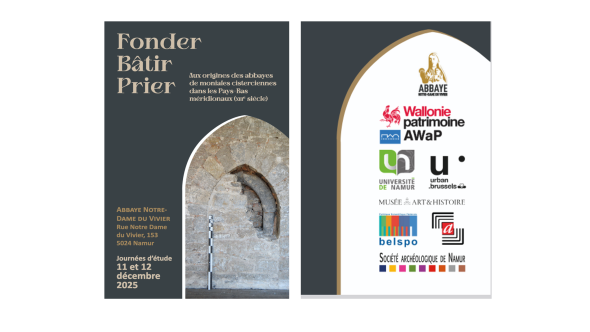
The success of female Cistercian monasticism in the Southern Netherlands in the 13th century - over forty houses in the dioceses of Liège and Cambrai - is a powerful indicator of the aspirations of a society in transformation, enthusiastic about new forms of spirituality and religious life. For all that, the phenomenon remains surprisingly little studied, despite the wealth of archaeological and historical sources.
The program
Thursday, December 11, 2025
9:30am: Welcome
10:00am: Introduction by the symposium organizing committee
Session 1 - Chair: Marie-Élisabeth Henneau (Université de Liège)
10:30am: Alexis Grélois (Université de Rouen-Normandie, GRHis) - L'appartenance des moniales à l'ordre cistercien (XIIe-XIIIe siècle): False debates and real questions
11:30am: Coffee break
11:45am: Michel Dubuisson (Abbaye de Villers asbl), Patrice Gautier (Musées royaux d'Art et d'Histoire), Louise Hardenne (Musées royaux d'Art et d'Histoire) - L'abbaye de La Cambre dans la filiation villersoise
12:35pm: Lunch break
Session 2 - Chair: Jeroen Deploige (Universiteit Gent)
1:40pm: Marie-Christine Laleman (City of Ghent), Els De Paermentier (Universiteit Gent)- The Byloque Abbey in Ghent: between archaeological memory and archival wealth
2:30pm: Pierre-Hugues Tilmant (SPW, AWaP), Marie Verbeek (SPW, AWaP), Sarah Cremer (Institut royal du Patrimoine artistique), Nicolas Ruffini-Ronzani (Université de Namur/Archives de l'État à Namur)- Dossier de fondation de l'abbaye Notre-Dame du Vivier: l'archéologie permet-elle lever un coin du voile?
3:20pm: Coffee break
3:40pm: François De Vriendt (Société des Bollandistes) - Memory and devotion in the female communities of Hainaut and Namurois. What place for local figures and traditions?
4:30pm:Robin Moens (FWO/KU Leuven) - (What) spiritual walls? The spirituality of mulieres religiosae enclosed in and outside monastic space
17:20: end of first day
18:00: verre de l'amitié offered by SPW
Friday, December 12, 2025
Session 3 - Chair: Geneviève Laurent (SPW, AWaP)
9:00: Philippe Mignot (SPW, AWaP) - Clairefontaine Abbey: archaeological data on the origins
9:50am: Vincent Debonne (Vlaamse Overheid-Agentschap Onroerend Erfgoed), Robin Moens (FWO/KU Leuven)- Sisters a little slower than we thought. The Cistercian abbey of Val-des-Vierges near Oudenaarde
10:40am: Coffee break
11:00am: visit to the former abbey of Notre-Dame du Vivier, accompanied by AWaP archaeologists
12:00pm: lunch break
Session 4 - Chair: Mathieu Piavaux (Université de Namur)
1:00 pm: Virginie Boulez (SPW, AWaP), Alain Marchandisse (FNRS/Université de Liège) - La Paix-Dieu 1240-1244. Foundation of a Cistercian abbey under the episcopacy of Robert de Thourotte. Dialogue of historical and archaeological sources
13:50: Marie Demelenne (Musée royal de Mariemont), Patrice Gautier (Musées royaux d'Art et d'Histoire), Jean-François Nieus (FNRS/Université de Namur)- The hermit, the lady and the clerics. Aux origines de l'abbaye de L'Olive (Morlanwelz)
2:40pm: coffee break
3:00pm: Emmanuel Bodart (Archives de l'État à Namur) - L'abbaye de Félixpré près de Givet. New revelations on its foundation and endowment (1246-1266)
3:30pm: Paul Lambrechts (Herita vzw) - Herkenrode Abbey, a millennium of history: how to interpret myths, excavations and sources, and how to incorporate them into a project for the future?
4:00 pm: Benoît Rouzeau (Université de Picardie Jules Verne, Trame UR 4284/ LAMOP UMR 858)- General conclusions
4:30 pm: end of symposium
Organizing committee
- Aurore Carlier - Société archéologique de Namur
- Patrice Gautier - Musées royaux d'Art et d'Histoire
- Xavier Hermand - Université de Namur
- Fiona Lebecque - Société archéologique de Namur
- Jean-François Nieus - FNRS/Université de Namur
- Matthieu Pignot - FNRS/Université de Namur
- Nicolas Ruffini-Ronzani - Université de Namur/Archives de l'État
- Pierre-Hugues Tilmant - SPW, AWaP
- Marie Verbeek - SPW, AWaP
Practical information
The Study Days organizing committee would like to thank the owners of the Abbey Notre-Dame du Vivier for their welcome and for making the premises available.
Surrounding these Study Days revolves a multitude of events dedicated to the Abbey Notre-Dame du Vivier de Marche-les-Dames. To find out more, see the program at www.lasan.be
Fernand Peloux (CNRS/University of Toulouse)
Fernand Peloux, Eulalie, Juste and Rufine. Writing, rewriting and transmission of the Passions of saints from ancient Hispania.
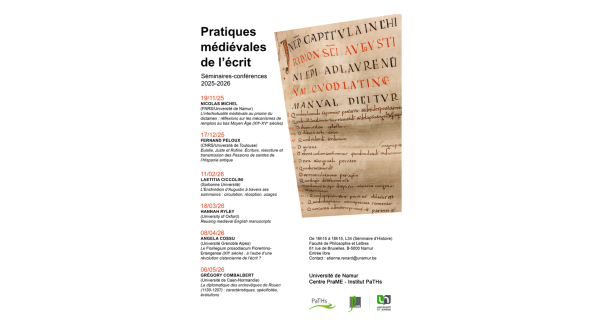
Laetitia Ciccolini (Sorbonne University)
Augustine's Enchiridion through its summaries: circulation, reception, uses

